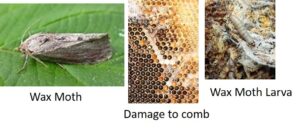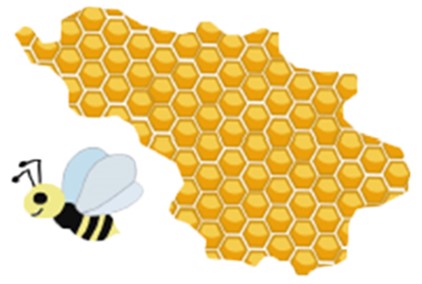Larvae of the moth Golleria mellonclia, which can seriously damage brood and empty combs. See “How to Identify, Prevent and Deal With Wax Moth in the Beehive”

How to protect a hive from wax moth infestation:
Keep bee numbers at a high ratio.
Maintain a healthy queen and replace her if necessary.
1, Consider replacing your brood frames every four years.
2. Repair or remove any cracked frames so that moths can’t lay eggs in those spaces.
3. Clean the bottom board of the hive.
4. Use a queen excluder to prevent brood in the honey super.
5. Don’t add another honey super until the hive is ready.
6. Check the hives regularly. Once the moth is established, your hive will be overrun swiftly if the bees can’t control the moth themselves, so be ready to intervene.
7. A strong hive helps to keep wax moth at bay. Ensure your queen is healthy and is laying a large number of eggs. You want a lot of brood to ensure there are enough adult bees to keep the hive safe.
8. Don’t take too long to prepare your hives for winter. I left the hive at two frame boxes at the beginning of winter but should have compressed it to one frame box sooner. While the bees were congregating in the bottom box, the wax moth likely made its way to the second frame box where there were no bees to protect the area.
To protect frame removed from the hive:
- Freeze frames for 48 hours. Then, store in sealed containers.
- Place frames in container with para-dichlorobenzene moth crystals. Note: do not use naphthalene based moth crystals.
